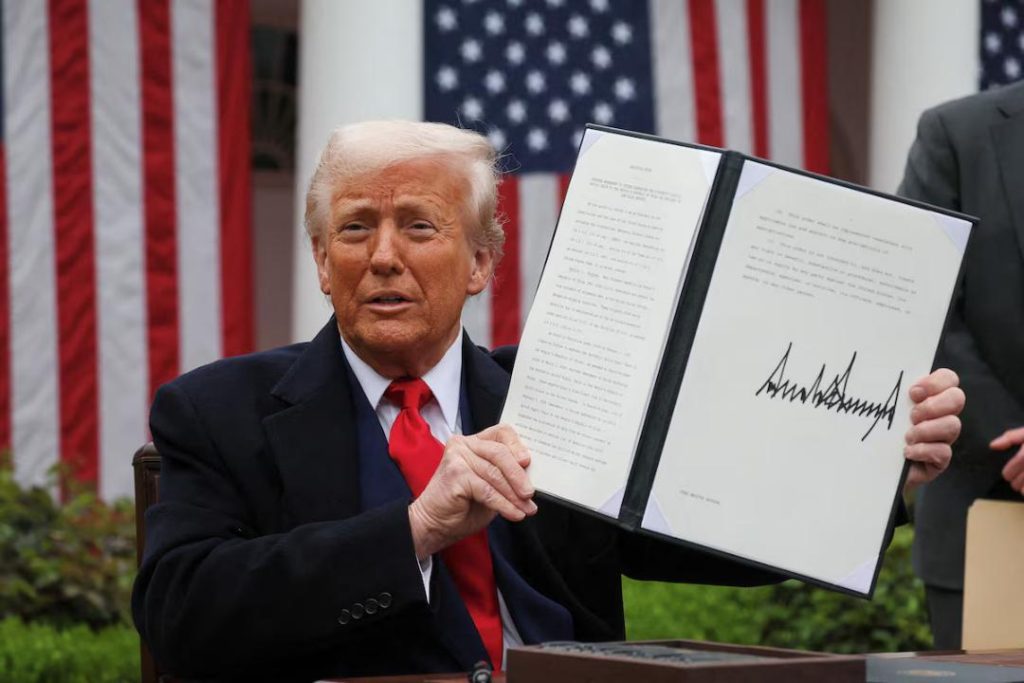
US Starts Collecting Trump’s New 10% Tariff
In a move that has sparked widespread concern about the impact on global trade, the US customs agents began collecting US President Donald Trump’s unilateral 10% “baseline” tariff on all imports from many countries on Saturday. This latest development has sent shockwaves through the international trade community, as it marks a significant departure from the traditional norms of trade agreements.
According to India, which was one of the countries hit with a 26% reciprocal tariff, the US President’s order stated that the baseline duty of 10% would be effective from April 05, 2025, and the remaining country-specific additional ad-valorem duty would be effective from April 09, 2025. This new tariff is expected to have far-reaching consequences for businesses and consumers alike, as it will increase the cost of goods imported into the US.
The move has been widely criticized by trade experts and economists, who argue that the US President’s unilateral decision to impose tariffs without consulting other countries or the World Trade Organization (WTO) is a breach of international trade norms. The WTO has been the cornerstone of global trade governance since the 1990s, and the US has been a key player in shaping its rules and agreements.
The US President’s decision to impose tariffs is seen as a response to alleged unfair trade practices by other countries, particularly China, which has been a major target of his trade policies. The US has accused China of engaging in intellectual property theft, forced technology transfer, and other unfair trade practices, which have led to a significant trade deficit between the two countries.
However, the timing of the tariff imposition is seen as a surprise move, as the US was previously expected to negotiate a trade agreement with China. The US President’s decision to impose tariffs without a deal in place has been seen as a major blow to the negotiations, and it remains to be seen whether the two countries will be able to reach an agreement in the near future.
The impact of the tariff on global trade is likely to be significant, as it will increase the cost of goods imported into the US and may lead to retaliatory measures from other countries. The US is one of the largest consumers of goods in the world, and the tariff is likely to have a ripple effect on global trade flows.
The US President’s decision to impose tariffs has also raised concerns about the potential impact on American consumers. The cost of goods imported into the US is likely to increase, which may lead to higher prices for consumers. This could have a significant impact on low-income households, who may struggle to afford the increased costs.
The move has also sparked concerns about the potential impact on the US economy. The tariff is likely to increase the cost of goods for American businesses, which may lead to higher prices for consumers and reduced competitiveness for American companies. This could have a significant impact on the US economy, particularly in industries that rely heavily on imports.
The US President’s decision to impose tariffs has also raised concerns about the potential impact on the global economy. The tariff is likely to increase the cost of goods for businesses and consumers around the world, which could have a significant impact on global trade flows. This could lead to a decrease in global economic growth and increased uncertainty in the global economy.
In conclusion, the US President’s decision to impose a 10% tariff on all imports from many countries is a significant departure from the traditional norms of trade agreements. The move is likely to have far-reaching consequences for businesses and consumers alike, and it remains to be seen whether the US President’s unilateral decision will lead to a trade war or a breakthrough in global trade negotiations.






